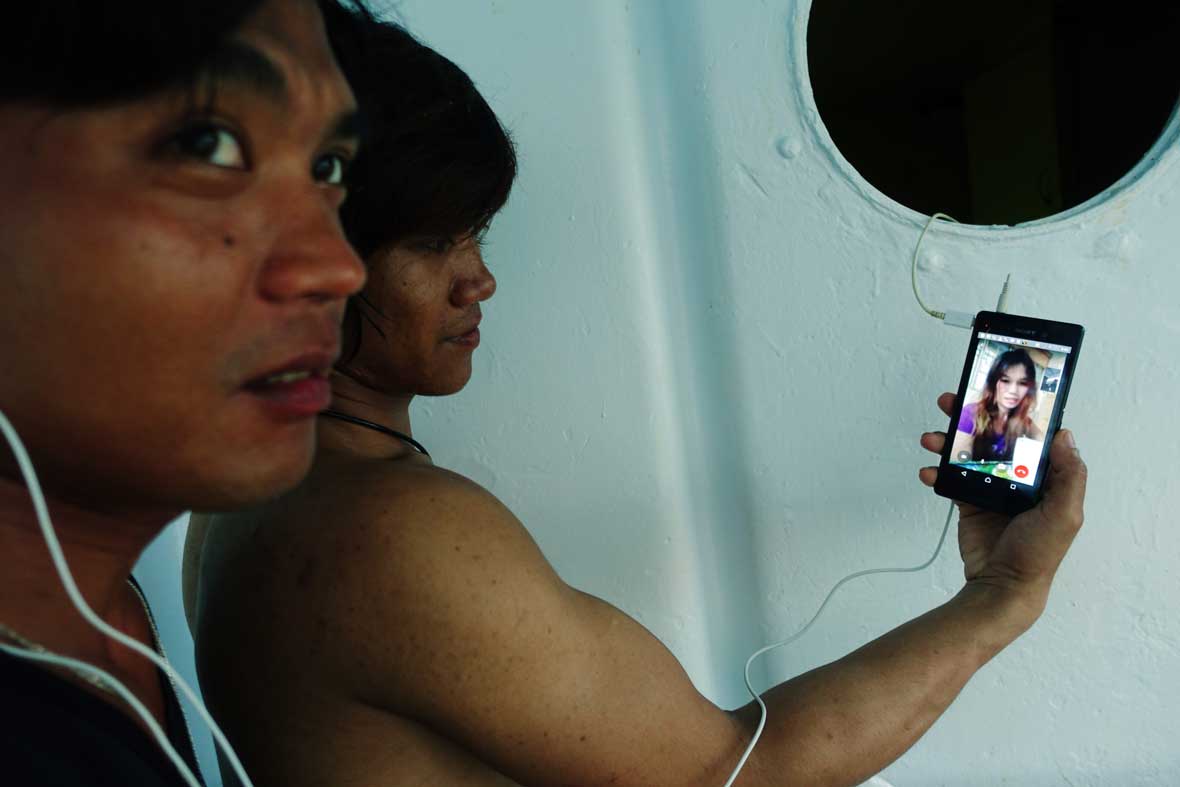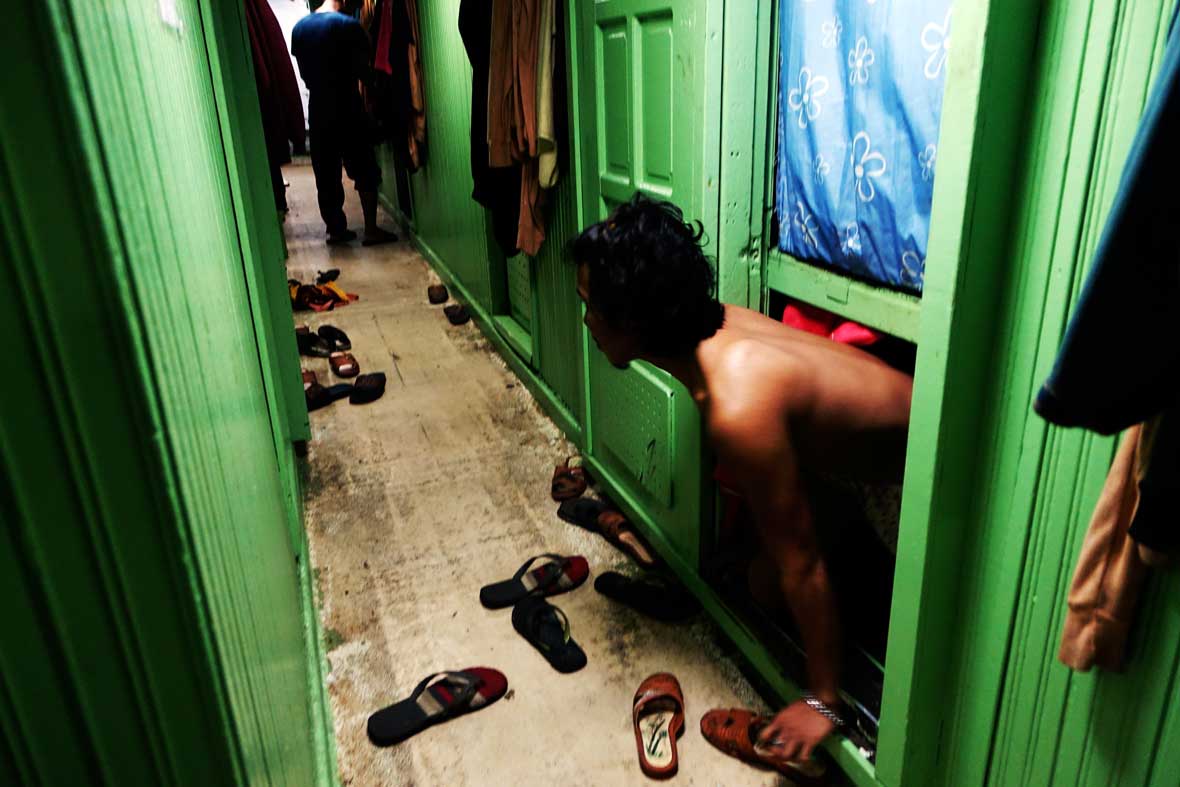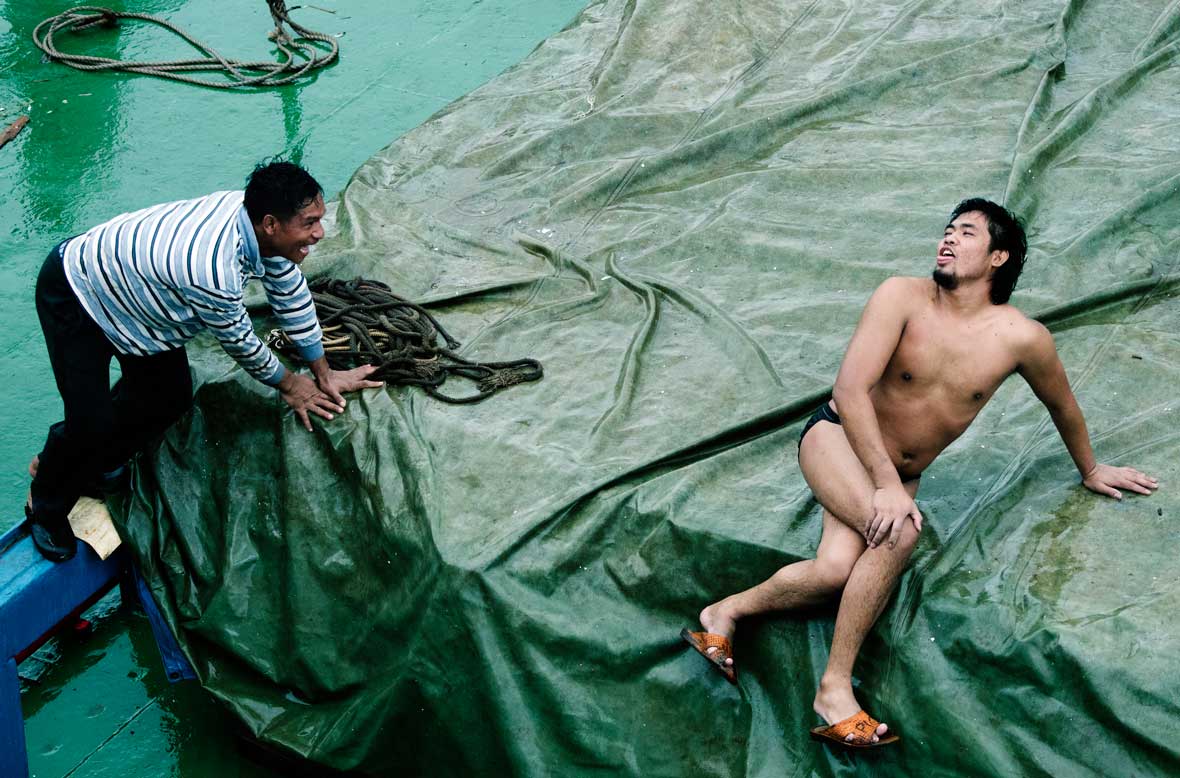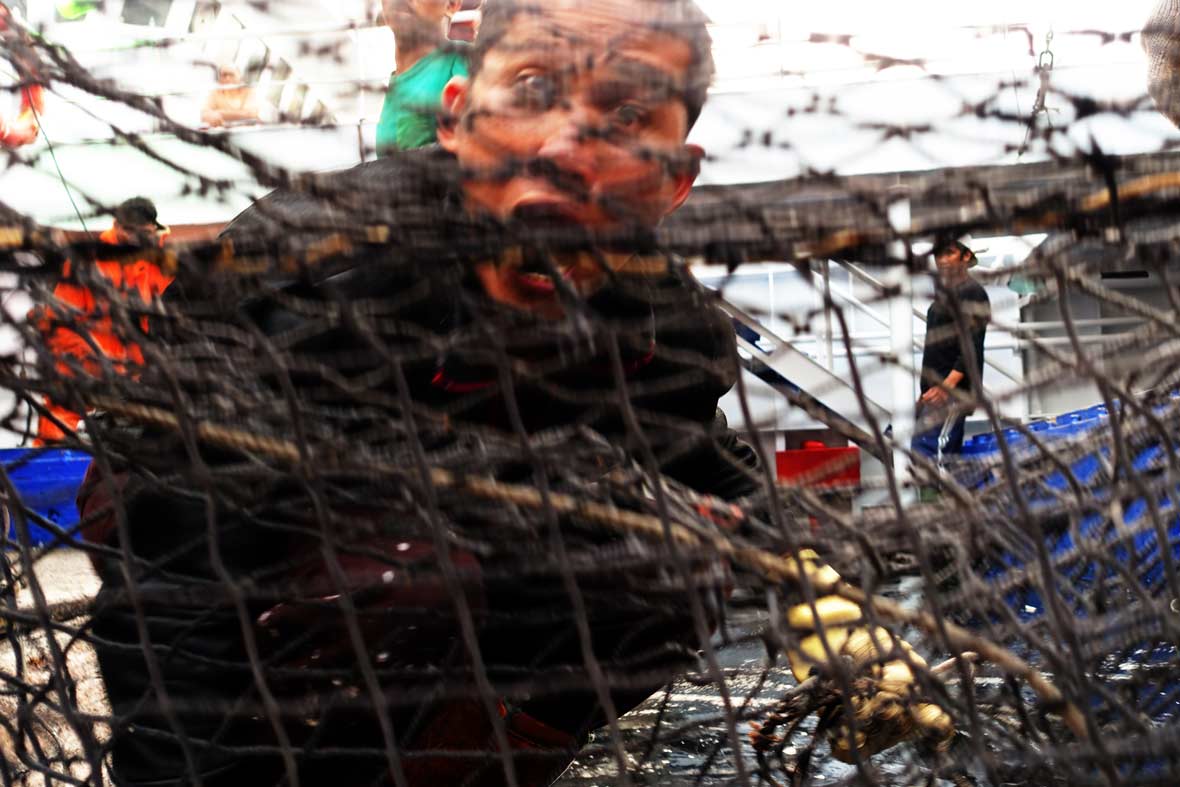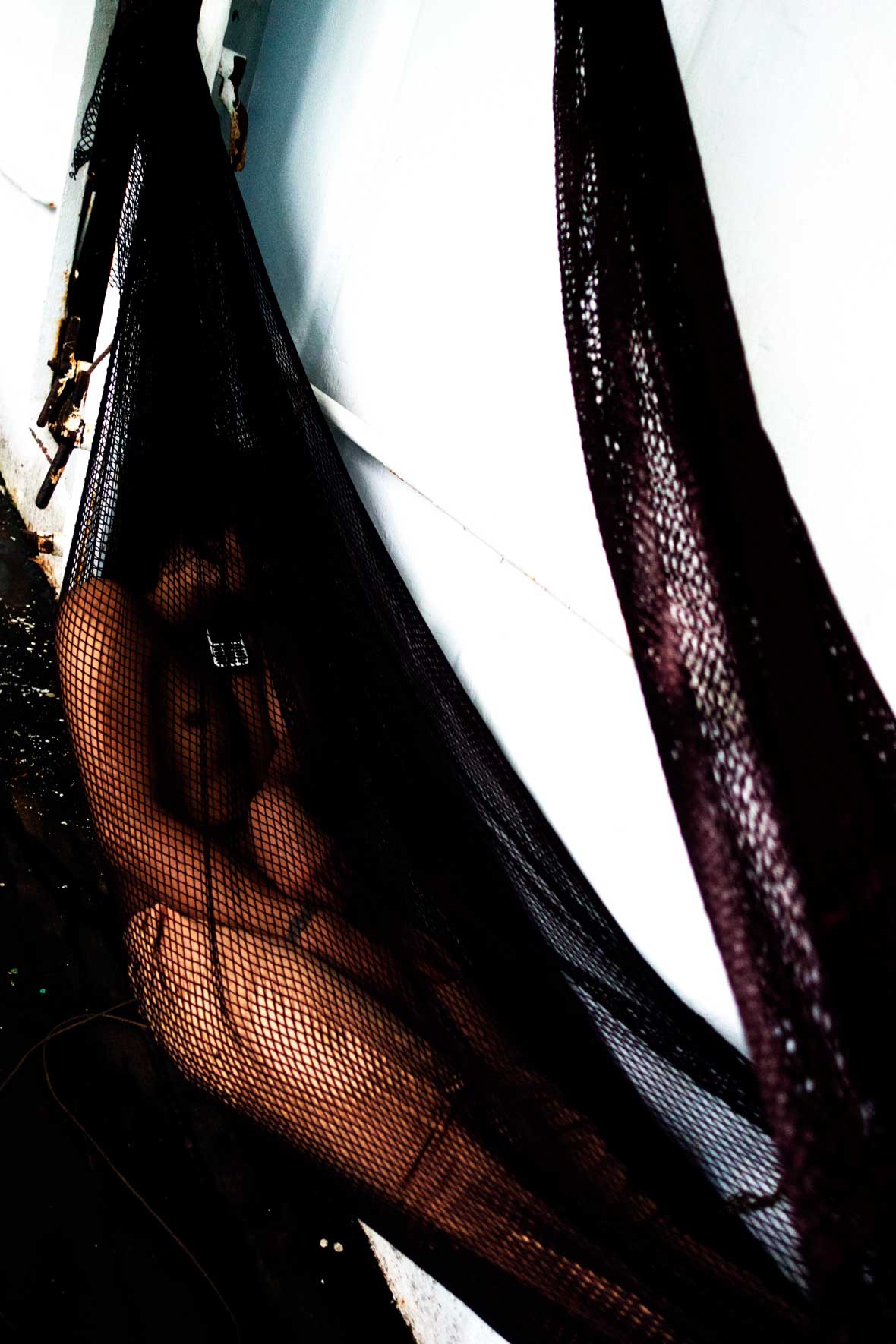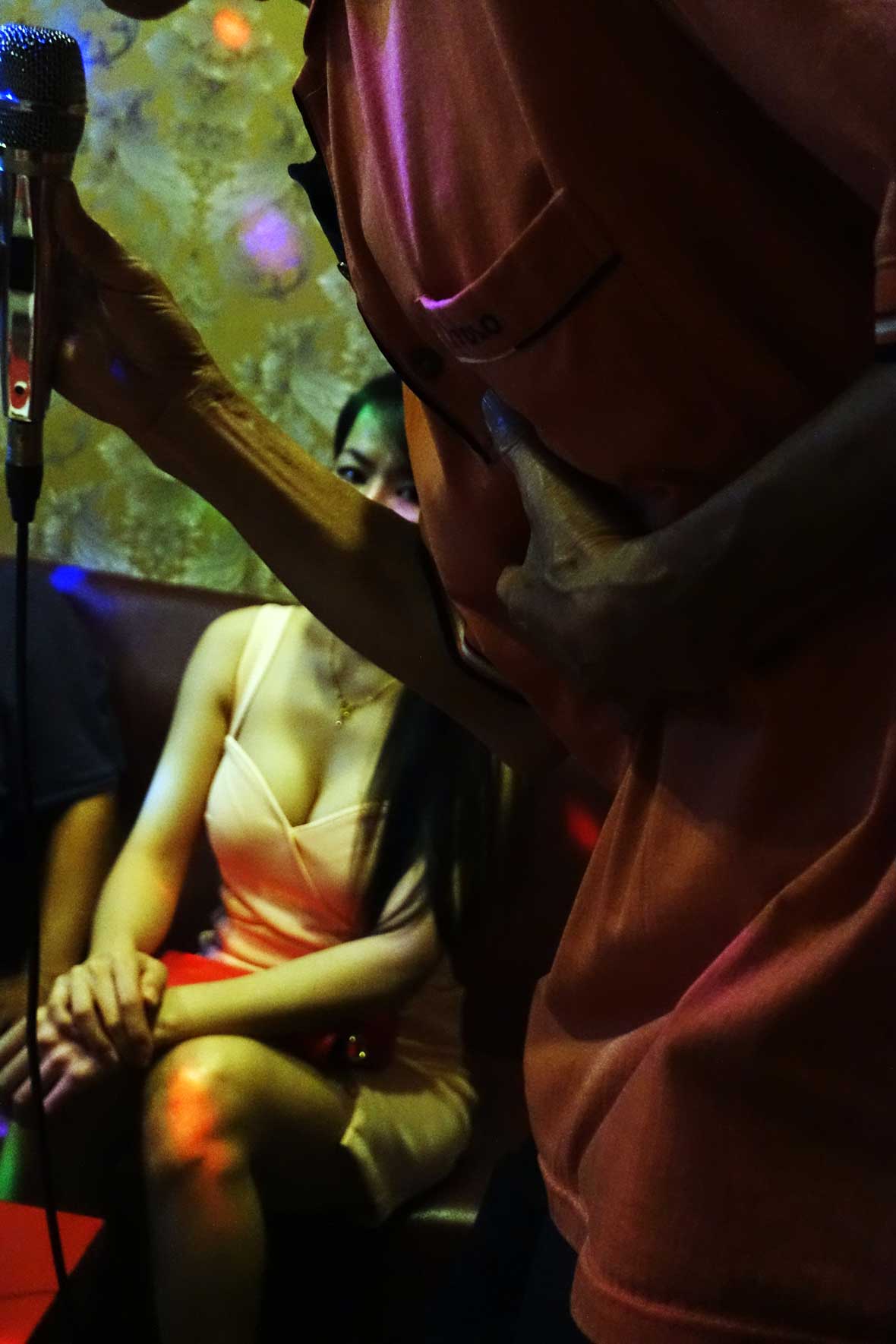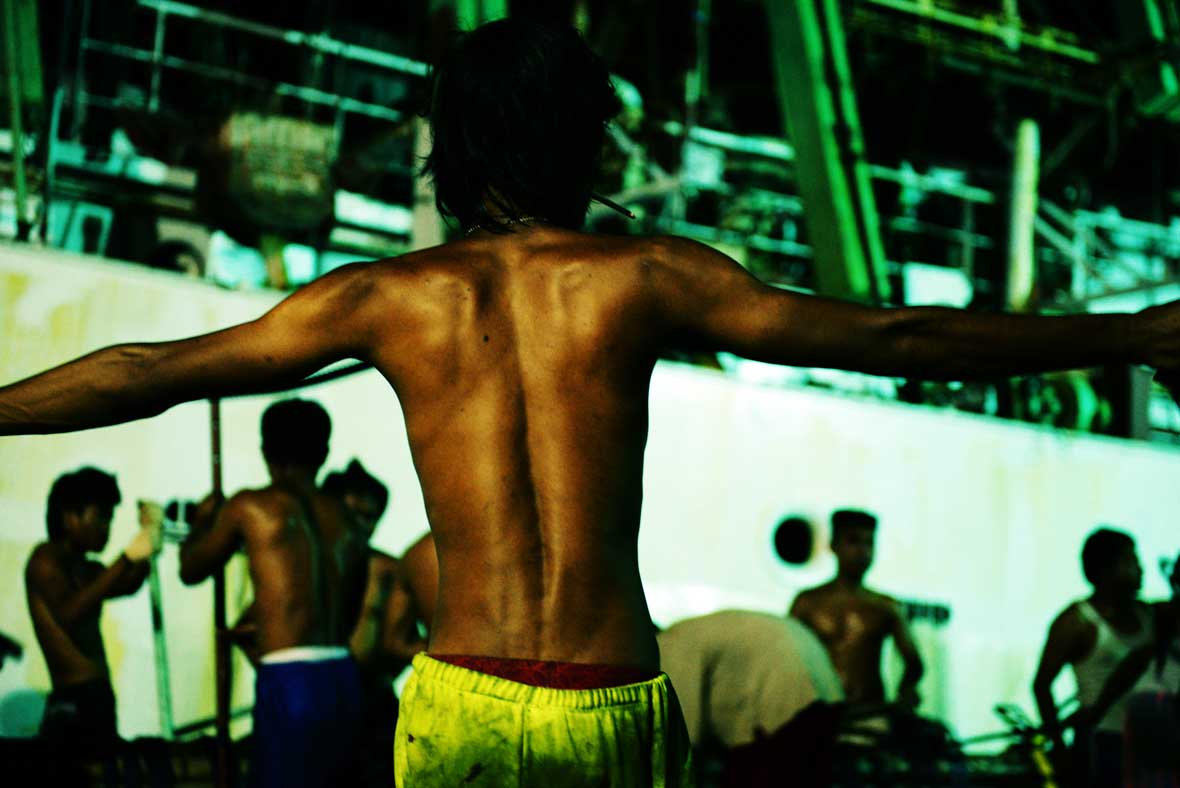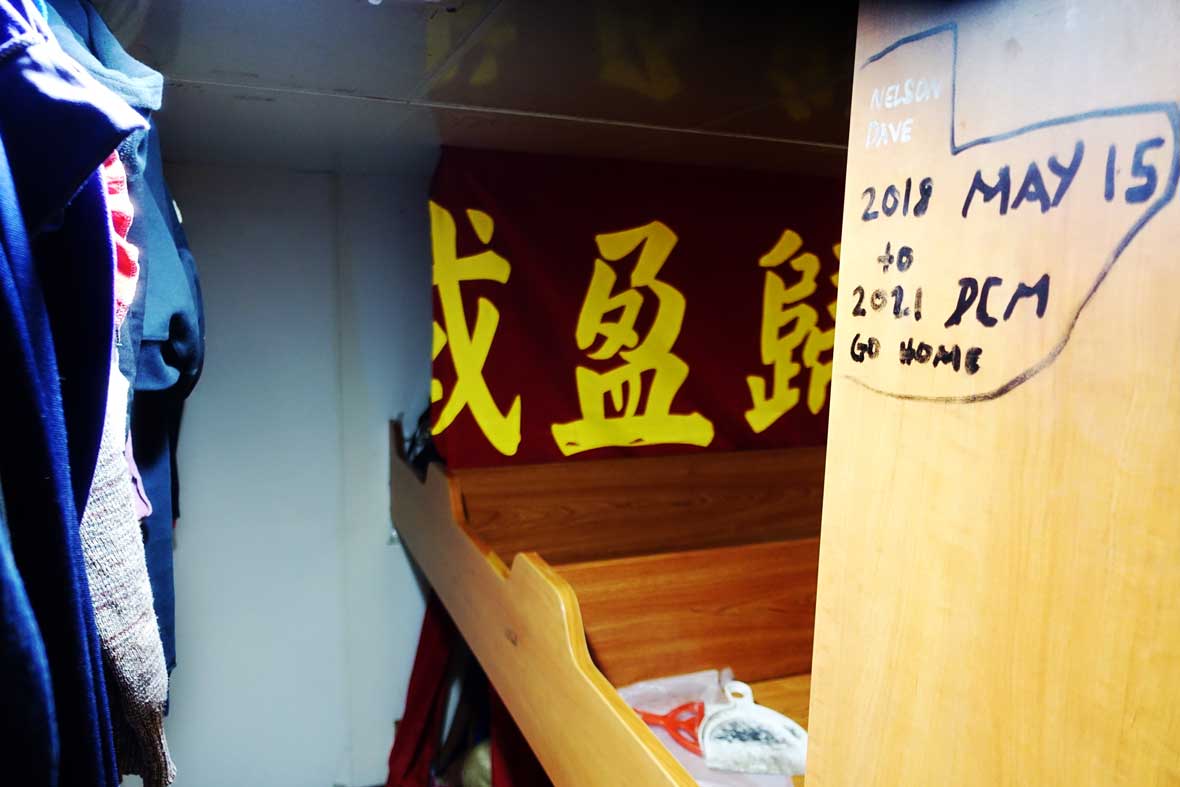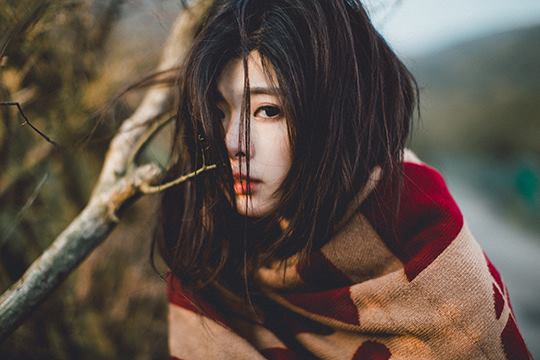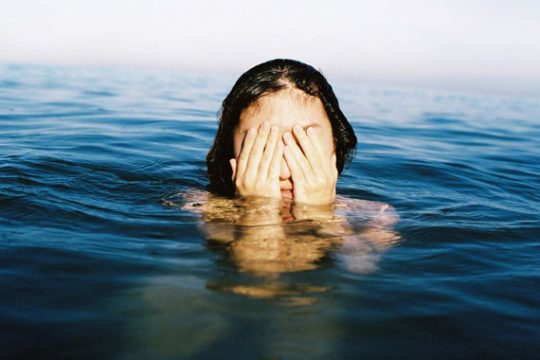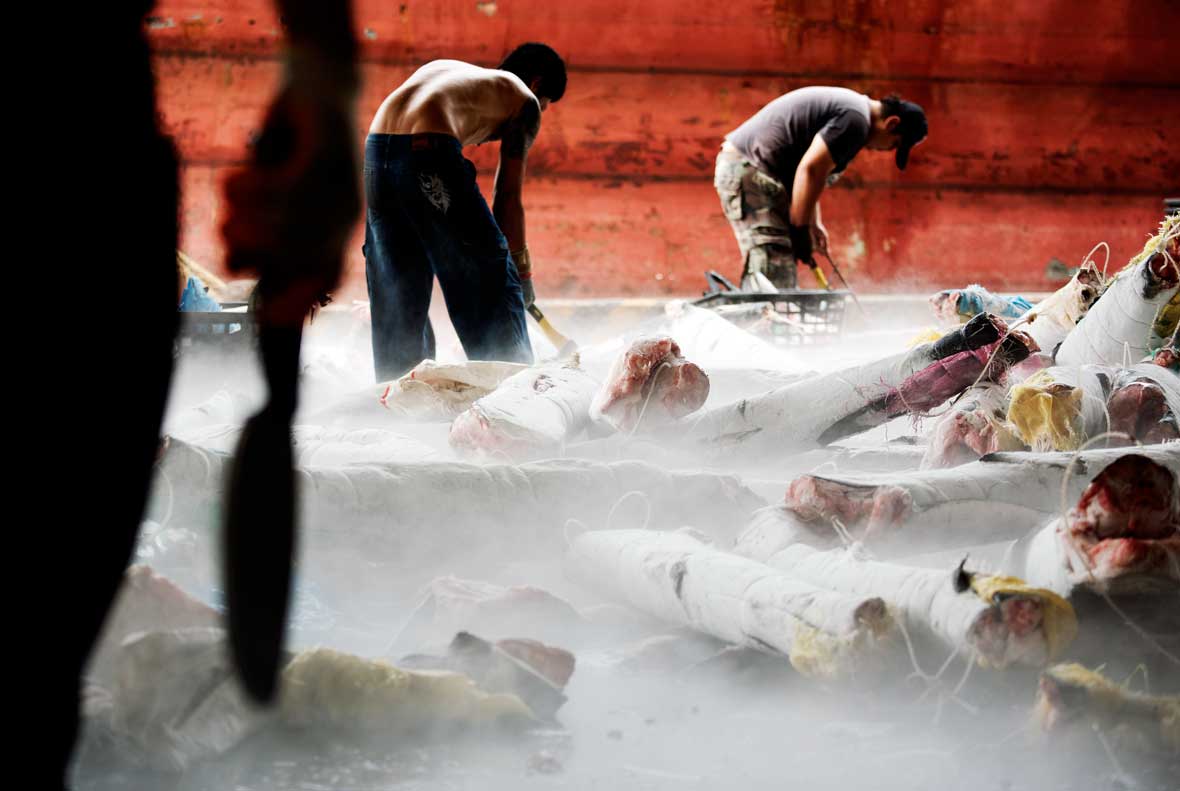
In the sun-drenched south of Taiwan, Qianzhen District is home to the island’s largest deep-sea fishing port. Taiwan boasts the largest ocean-faring fishing fleet in the world, with nearly three thousand ships, most of which set out from Qianzhen, and voyages last six months, a year, even two.
On the lowest rung of this high-output, profit-driven industry is a group of workers who live off the seas. Most of them are young men from Southeast Asia: over half come from Indonesia, while others come from the Philippines or Vietnam. Aboard the dreary Taiwanese ships where they eke out a living, they give their bodies and youth over to work. They’re always looking ahead to the day they’ll pull into harbor, but even when they do, the harbor outside won’t be their home.
在阳光普照的台湾南方,高雄前镇渔港是台湾远洋渔业最大的基地港口。台湾拥有全球为数最多、近三千艘远洋作业渔船,大部分都从前镇渔港出航。而每一趟驶向大海的远行,一去就是半年、一年,甚至两年。
在这产值极高、利益为上的产业底层,有一群以海维生的渔工。他们大多是来自东南亚国家的年轻人,一半以上来自印尼,也有一些来自菲律宾、越南。在阳光照不进的台湾船上努力生存,用身体和青春作为代价辛苦工作。靠岸之日遥遥无期,但即使靠岸,港边也不是他们的家。
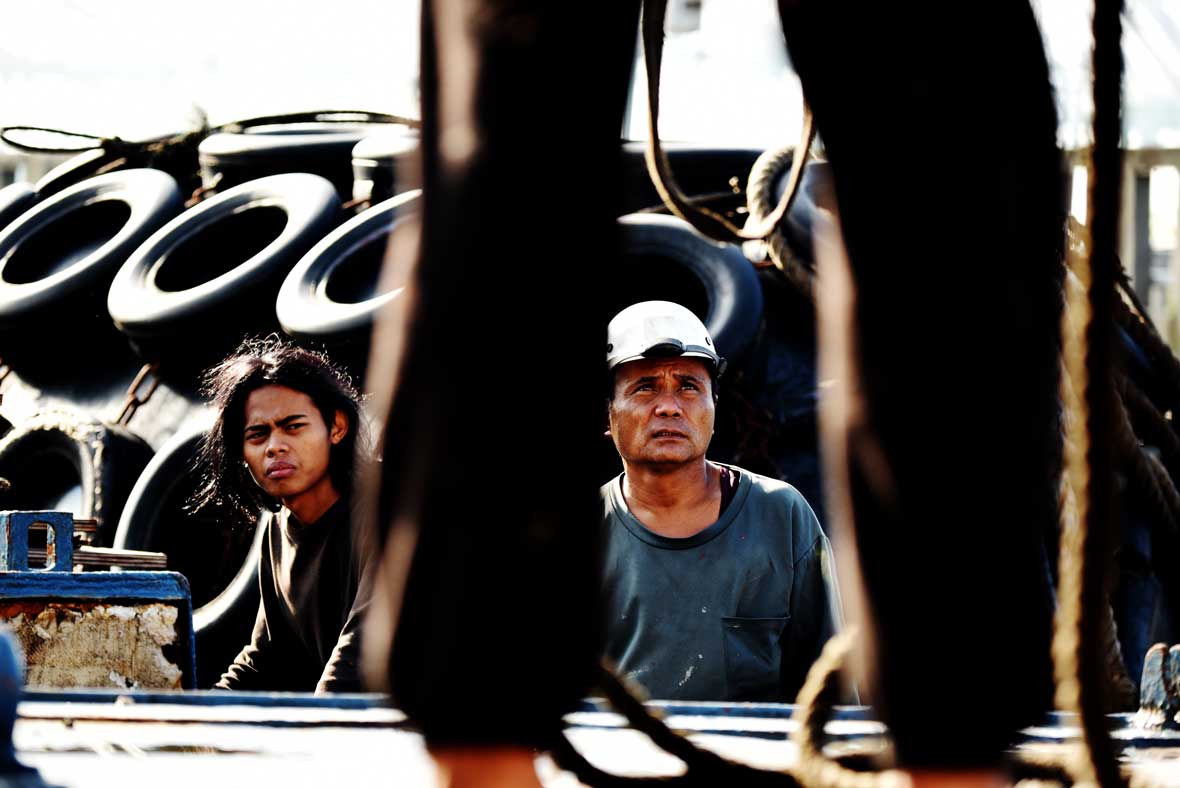
One photographer, Aming Lee, has set out to document the lives of these people on what he calls “a floating prison cut off from the rest of the world” in his book There Is No God Here.
The ocean is a place forsaken by god, but there’s a group of people who move across it freely. To see a world in a grain of sand, and heaven in a wildflower. Who would ply the seas, if they could stay on land? —There Is No God Here
Lee first picked up a camera at 18, and he’s been a photojournalist for most of his life—he describes himself as a “photography handyman.” When he retired, he didn’t know what to do with all the extra time, so to keep himself occupied, he grabbed his camera and went out to the street to take pictures.
Camera slung over my shoulder, I began roaming the streets . . . until I found my way to the fishing port of Qianzhen, and there, under the influence of tobacco and alcohol, I launched my fantastic shutter voyage . . . At first I didn’t understand how a fishing port worked, and I went around with two cameras and two lenses taking photos everywhere. But even without professional gear, people got upset when I took their picture, and the port locals would give me dirty looks.
“Hey asshole! What are you doing taking pictures of my ship?”
“Get the hell out of here! I’ll hunt you down!”
It takes all kinds, and of course some people were pretty nice. My shots of the port began with them.
每一艘渔船都宛如一座与世隔绝的海牢。但有一位摄影师,却自愿进入这座海牢。他的摄影书《这里没有神》记录下了渔工最真实的生活情景——他是李阿明。
“大海是一个不被神眷顾的地方,却有一群人在那里自在地行走。一物一世界,一命一天堂。能待陆上,谁愿意漂泊海上?”——节录自《这里没有神》。
李阿明十八岁拿起相机,当了半辈子的摄影记者,自称“摄影黑手”。退休后深感时间多到不知如何运用,为了打发时间,他决定带着老朋友相机一台,上街拍人。
相机一揹开始流落街头……直到逛来前镇渔港,烟酒交互作用下,开展了我的快门奇幻之旅……起初摸不清楚渔港状况,背着两机两镜,港边四处游走随拍,但这一身非专业行头,却引起被拍者的不快和渔港人的侧目。
“干!拍我的船干什么?”
“唛冲康(不要乱来),我找你找得到!”
人百百款,当然也有比较和善的。我的渔港近距离摄影就是从这些人开始的。
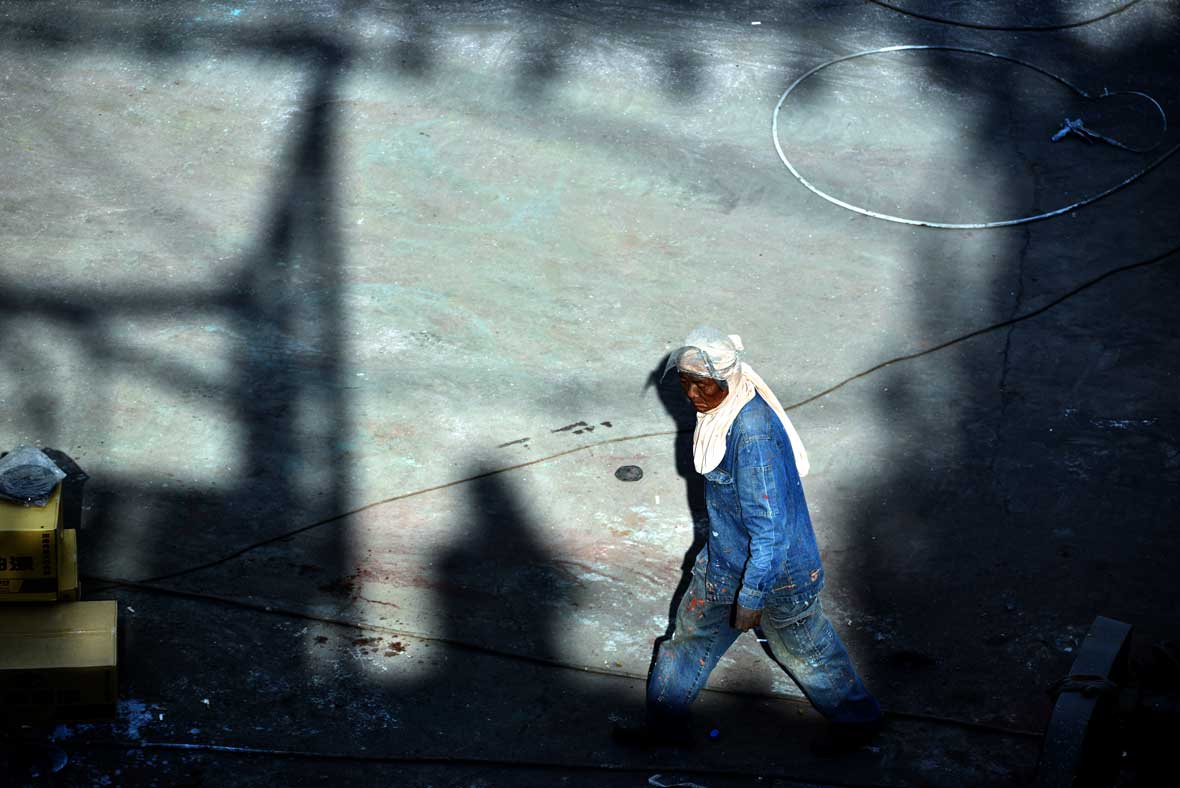
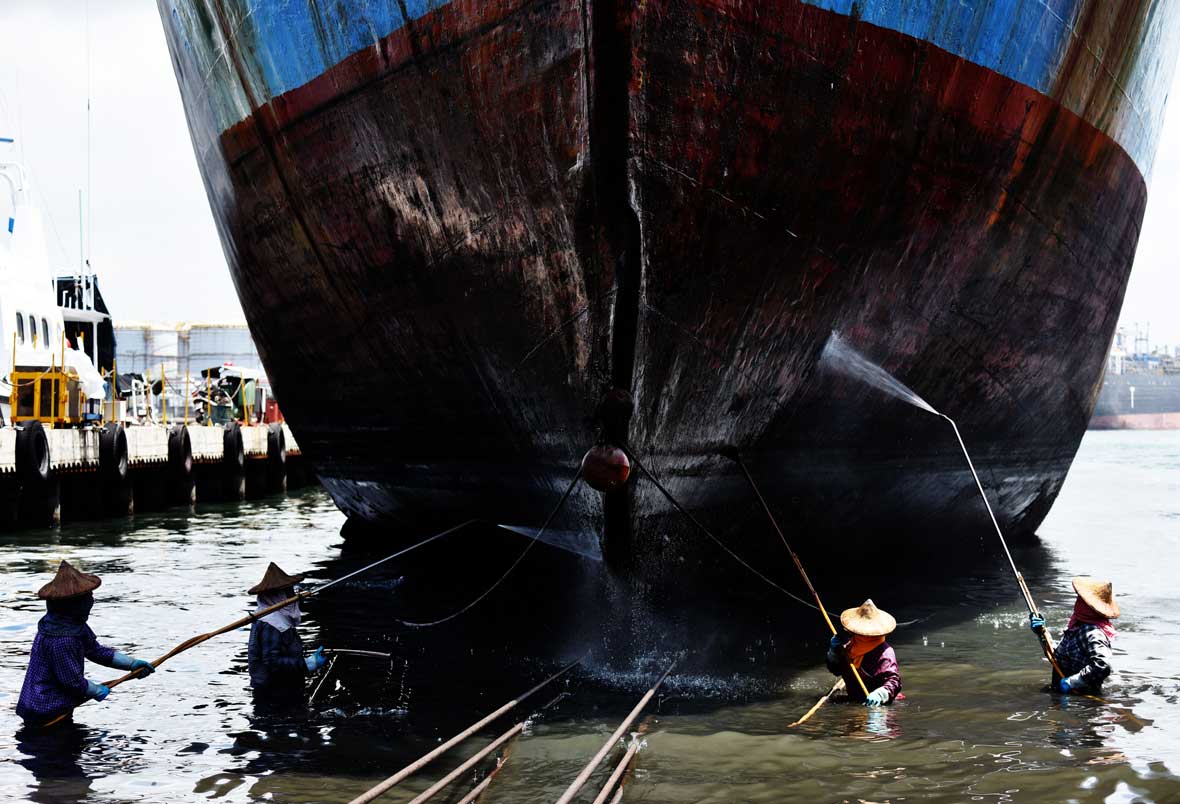
The media often report on how bad the conditions for fishing boat workers are, so the exposure is all negative. That’s why fishing companies don’t let reporters, photographers, or outsiders near their ships. “When I decided to take pictures of fishing workers, my biggest problem was my identity. I had to pretend I was there to work. I could only use a pocket camera and take pictures on the sly. If someone from the fishing company found out, I’d just say I was teaching myself photography.”
To get the intimate shots he wanted aboard, he responded to an ad for a temporary position as a ship watchman, or custodian. “The job paid NTD $1000 per day (around US $33), with no insurance, no weekends, 24 hours a day on board, regardless of the weather. It was a little like being a doorman. Most ship watchmen are working-class Taiwanese men in their sixties or seventies, and their status is the same as the foreign workers. Because they also have to act as chaperones, many of whom don’t speak the language, they’re called ‘papa-san'”—a male equivalent to “mama-san,” a term used in Southeast Asia for a woman who oversees a bar or brothel.
由于媒体经常报导渔工工作环境的恶劣,曝光的全是负面消息,因此船公司极度排斥记者、相机和外人。“这项拍摄渔工计划最困难的是我的身份问题。我在这里假借职务之便,只能用口袋相机偷拍,万一被船公司的人发现就说:‘我在学摄影’。”
而他的职务,是“看船的”。
为了能更近距离拍摄渔工,李阿明应征了一份船上临时工的工作。“日薪1000元(约220人民币),没有保险,没有周休,24小时全天候都在船上,类似于大楼保安的工作。看船的大都是六七十岁以上的台湾低端老人,地位和外籍渔工雷同。因为还身兼在船上语言不通的外籍渔工的保母,所以也会被喊作‘爸爸桑’。”
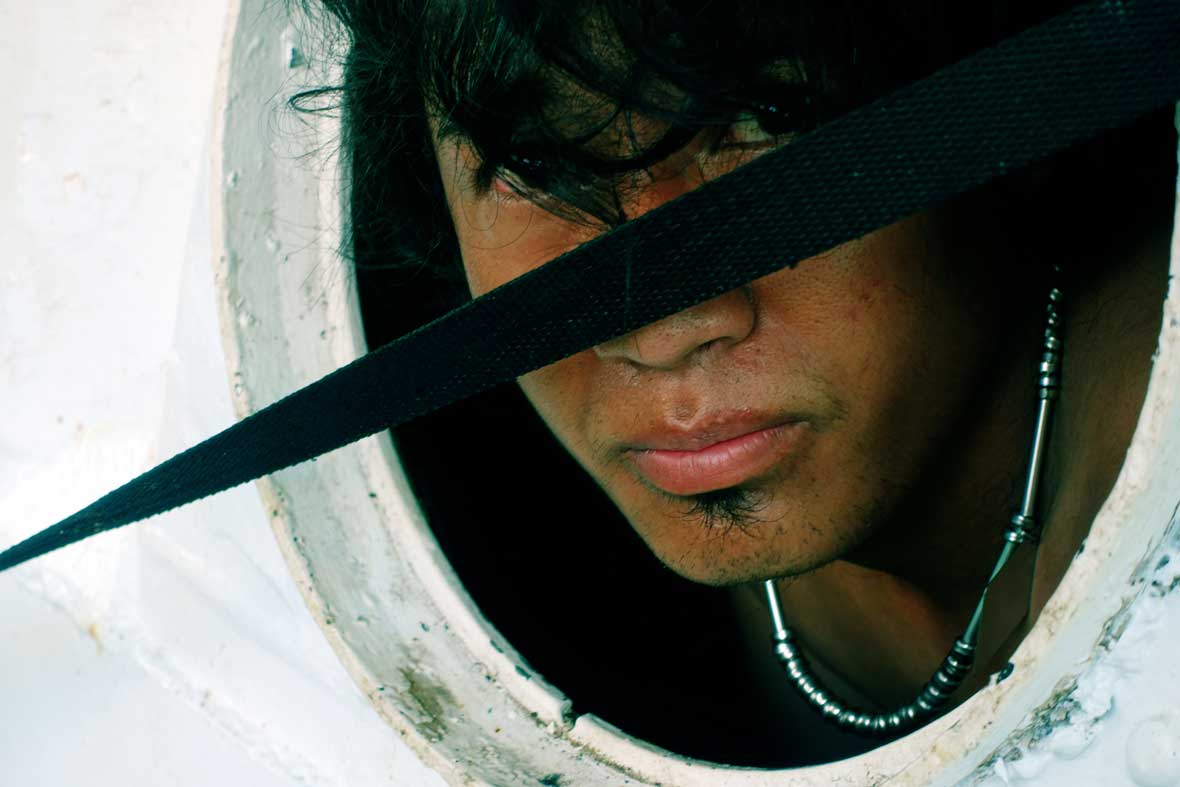
Lee’s been a “papa-san” for over four years now. In September 2018, the photos and text he gathered over the years appeared in print in a collection titled There Is No God Here.
Aboard every ship, there are clear social hierarchies, and these migrant fishermen are often at the bottom. Lee has stood on the front lines and seen the oppressive life of the fishing boat workers, yet in his words and images, he touches only lightly on the violence and exploitation that the outside world hears about. Instead, he mostly depicts his subjects smiling, playing around, and goofing off. “I roamed the ship freely and took photos. We all trusted each other, and there was no pressure to be anything else,” Lee says. “When they’d ship out, I’d burn the photos onto a CD to give to them, and we’d add each other on Facebook and stay in touch. The crew members’ families would even join in on the online conversations.”
至今,李阿明的“爸爸桑”身份已经持续了四年多。这些日子以来累积的许多照片和文字都收录在《这里没有神》,这一本于2018年9月发行的摄影文集中。
船上是一个阶级分明的社会,而渔工们就位居底层。即使站在第一线眼见渔工备受压迫的生活,但外界时有所闻的暴力和剥削,在他的文字和摄影里都被轻描淡写。反之他刻画更多的,是渔工们开心玩乐、轻松的一面。“我在船上拿着相机随走随拍,悠游自在,互相信任完全没有压力。离港时再将照片烧成光碟送给他们,也会彼此互加脸书分享近况,甚至连船员家人也加入。”
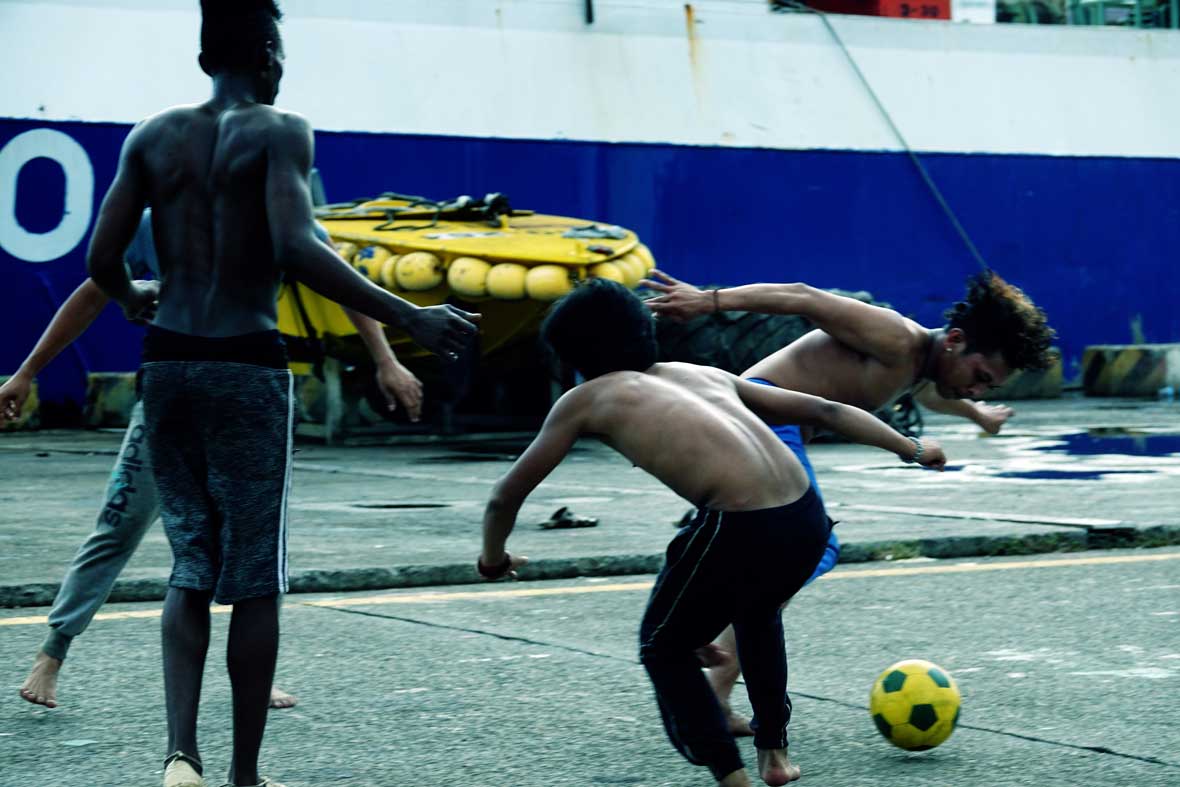
Like anyone else, they know what it means to be happy and have fun. They’re my models of happiness . . . These fishing boat workers are about the same age as my kids, and with their optimism, open-mindedness, and kindness, they’ve taught me an invaluable lesson about life. Anyone who works lives honestly and works hard can stand tall and proud.
如常人般懂得玩乐懂得享受,他们都是我心里的欢乐英雄……这些和我小孩年纪相仿的外籍渔工,他们的乐观、豁达和善良,扎扎实实地让我上了人生宝贵的一课。人,永远永远,不会因认真生活、认真工作,就矮人一截!
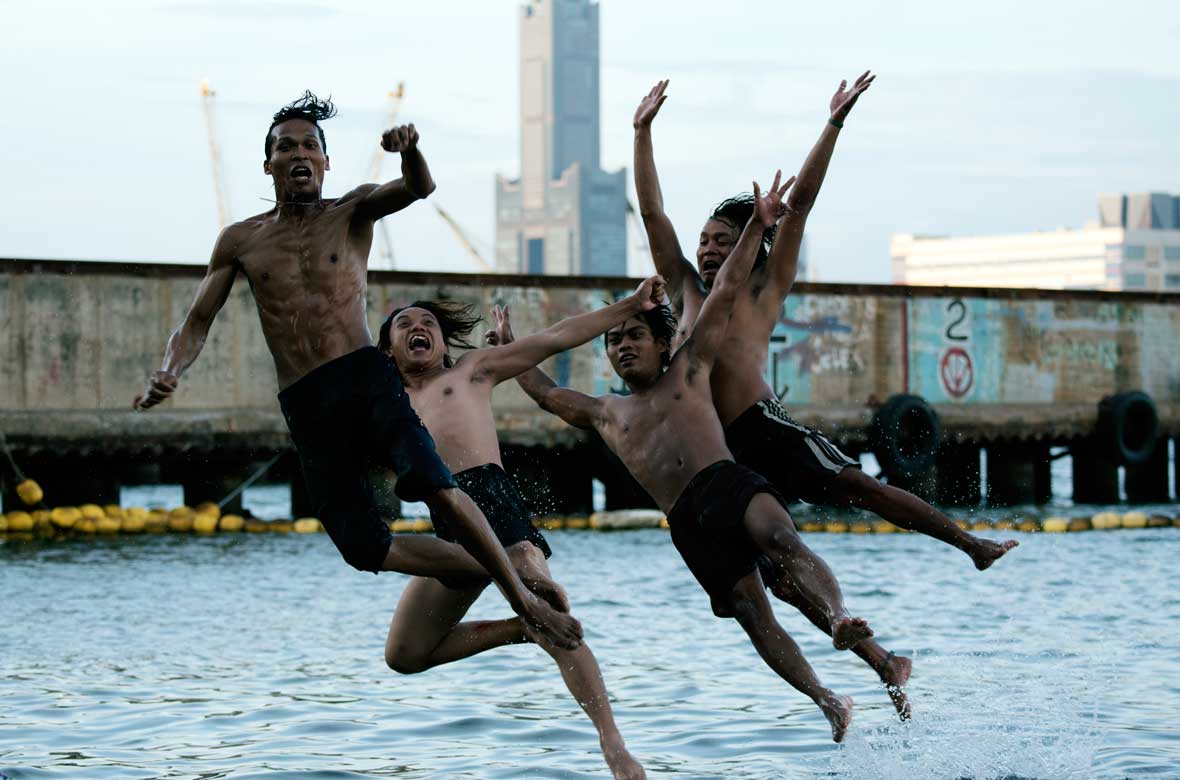
Lee didn’t stop taking photos once he published his book. A few days after I sent him the interview questions, he sent a reply saying, “I’ve still been looking after ships; most of my time is spent aboard one.” He told me he’s moved from Qianzhen, which has become more restricted and “very difficult to openly photograph,” to Hsinta, a smaller fishing port where he continues his work as a watchman, waiting for the next ship to dock.
“I never thought of myself as making art. I just followed my instincts from decades of working as a photojournalist. I’d blend into the environment and just use my camera to ‘observe.'” Lee once said that life on the boat made him feel truly at home, and that when he’s with fishing boat workers he feels they’re all a family. “This sense of home comes from not having any other aims. Everyone’s different, with different interests, so you can simply hang out, spend time with people without ulterior motives.”
“Photography,” he says, “is just an extension of that.”
Click here to purchase a copy of There Is No God Here.
而拍摄计划并没有因为发行摄影集就告一段落。在将采访资料寄给李阿明的几天后,他在回信中捎来“最近仍在顾船,大都还在船上。”他向我们透露目前他又转移拍摄的阵地,从排他性较强、“很难正大光明拍摄”的前镇渔港换到另一个小渔港“兴达港”驻点,就这样住在无人的渔船上,等待着下一艘渔船的回航。
“我从来不觉得我在创作,只是以数十年来的摄影记者本能,平常心融入环境之中,用相机‘观看’罢了。”李阿明曾说过,渔船生活是真正让他感到自在,和渔工的相处期间宛如一家人。“这种自在感,来自于无欲。在这大异其趣的异温层里,不带心眼地与他人单纯共处、消磨时日。”
正如他所说,“摄影,只是附加的载体。”
点击此处可购买《这里没有神》。

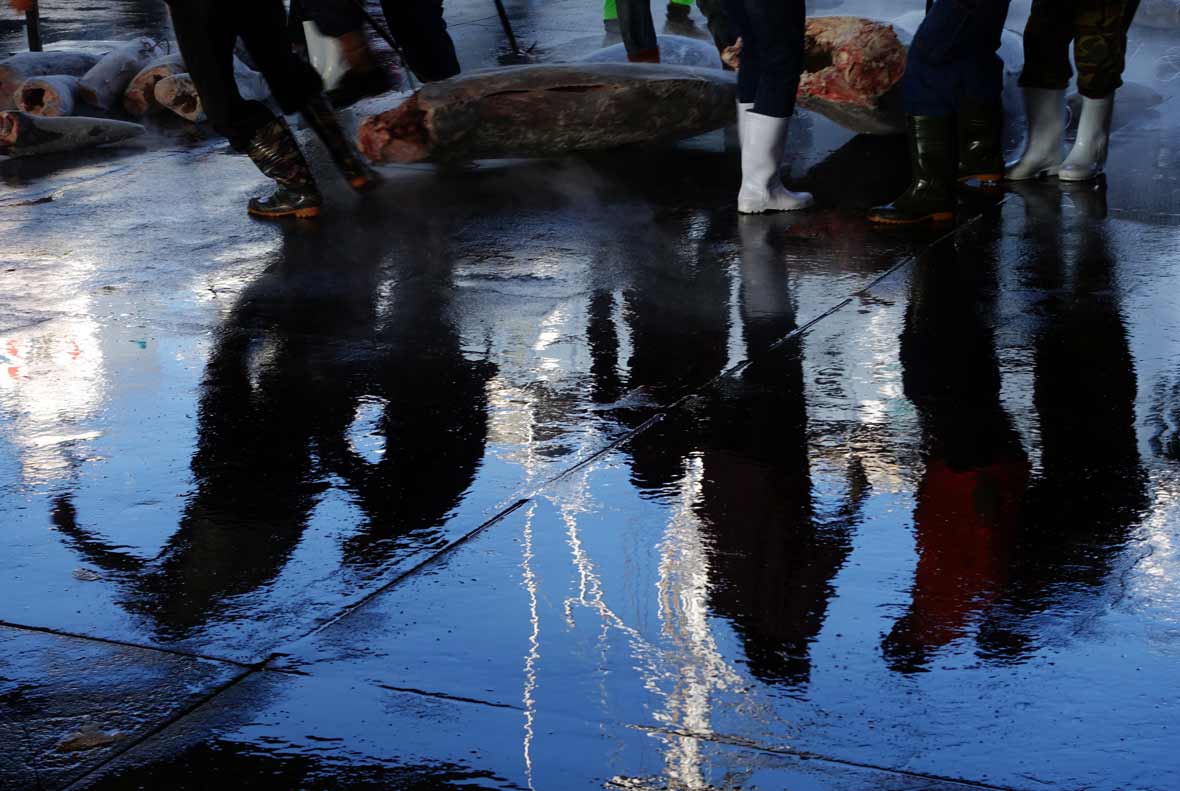
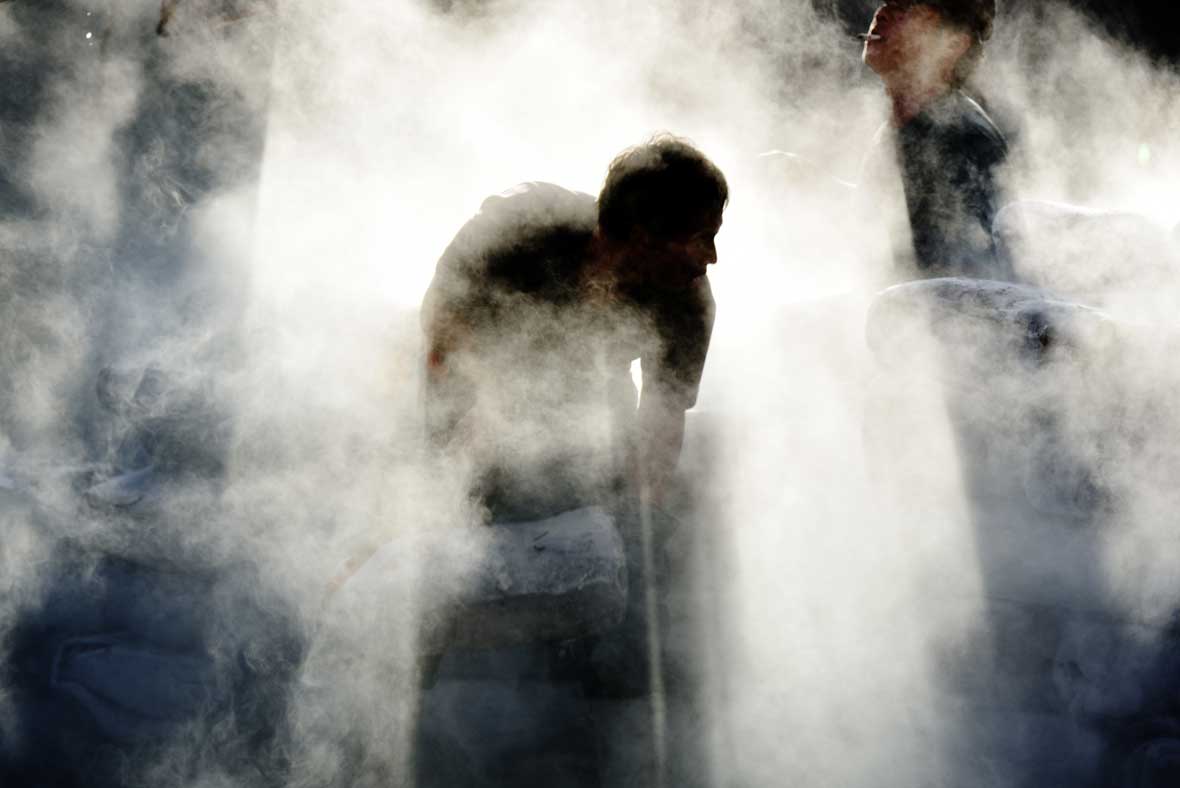
Like our stories? Follow us on Facebook and Instagram.
Website: aminglee.com
Contributor: Yang Yixuan
English translation: Allen Young



